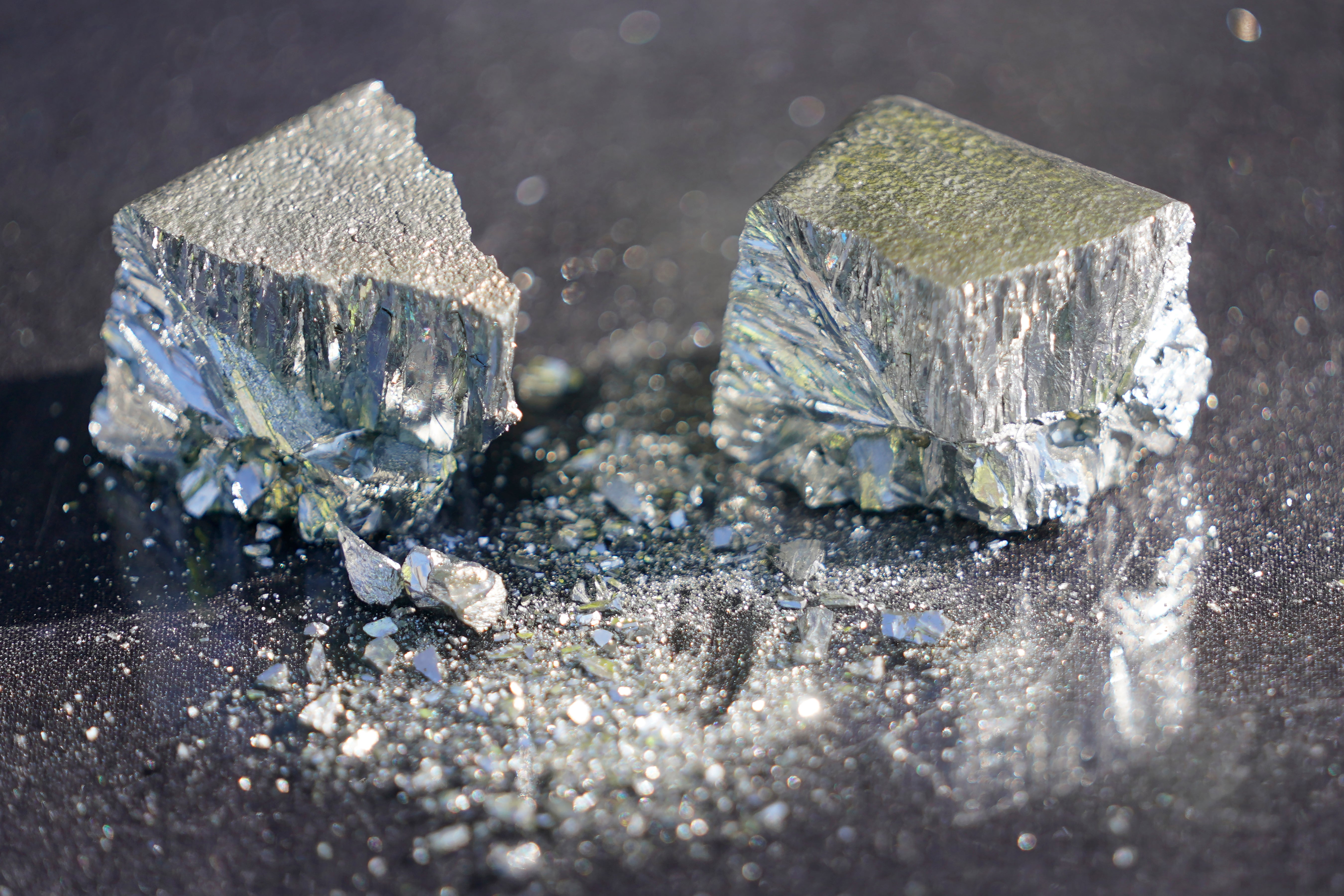Study: Enough rare earth minerals to fuel green energy shift
The world is trying to switch from electricity produced by burning fossil fuels to cleaner wind and solar power, but some people have worried that there aren't enough rare earth minerals to make the green electricity switch

Your support helps us to tell the story
From reproductive rights to climate change to Big Tech, The Independent is on the ground when the story is developing. Whether it's investigating the financials of Elon Musk's pro-Trump PAC or producing our latest documentary, 'The A Word', which shines a light on the American women fighting for reproductive rights, we know how important it is to parse out the facts from the messaging.
At such a critical moment in US history, we need reporters on the ground. Your donation allows us to keep sending journalists to speak to both sides of the story.
The Independent is trusted by Americans across the entire political spectrum. And unlike many other quality news outlets, we choose not to lock Americans out of our reporting and analysis with paywalls. We believe quality journalism should be available to everyone, paid for by those who can afford it.
Your support makes all the difference.The world has enough rare earth minerals and other critical raw materials to switch from fossil fuels to renewable energy to produce electricity and limit global warming, according to a new study that counters concerns about the supply of such minerals.
With a push to get more electricity from solar panels, wind turbines, hydroelectric and nuclear power plants, some people have worried that there won’t be enough key minerals to make the decarbonization switch.
Rare earth minerals, also called rare earth elements, actually aren't that rare. The U.S. Geological Survey describes them as a “relatively abundant.” They're essential for the strong magnets necessary for wind turbines; they also show up in smartphones, computer displays and LED light bulbs. This new study looks at not only those elements but 17 different raw materials required to make electricity that include some downright common resources such as steel, cement and glass.
A team of scientists looked at the materials — many not often mined heavily in the past — and 20 different power sources. They calculated supplies and pollution from mining if green power surged to meet global goals to cut heat-trapping carbon emissions from fossil fuel.
Much more mining is needed, but there are enough minerals to go around and drilling for them will not significantly worsen warming, the study in Friday’s scientific journal Joule concluded.
“Decarbonization is going to be big and messy, but at the same time we can do it,” said study co-author Zeke Hausfather, a climate scientist at the tech company Stripe and Berkeley Earth. “I’m not worried we’re going to run out of these materials."
Much of the global concern about raw materials for decarbonization has to do with batteries and transportation, especially electric cars that rely on lithium for batteries. This study doesn’t look at that.
Looking at mineral demands for batteries is much more complicated than for electric power and that’s what the team will do next, Hausfather said. The power sector is still about one-third to half of the resource issue, he said.
A lot depends on how fast the world switches to green energy.
There will be short supplies. For example, dysprosium is a mineral used for magnets in wind turbines and a big push for cleaner electricity would require three times as much dysprosium as currently produced, the paper said. But there’s more than 12 times as much dysprosium in reserves than would be needed in that clean energy push.
Another close call is tellurium, which is used in industrial solar farms and where there may be only slightly more estimated resources than what would be required in a big green push. But Hausfather said there are substitutions available in all these materials' cases.
“There are enough materials in reserves. The analysis is robust and this study debunks those (running out of minerals) concerns,” said Daniel Ibarra, an environment professor at Brown University, who wasn’t part of the study but looks at lithium shortages. But he said production capacity has to grow for some “key metals" and one issue is how fast can it grow.
Another concern is whether the mining will add more heat-trapping carbon emissions to the atmosphere. It will, maybe as much as 10 billion metric tons, which is one-quarter of the annual global carbon emissions, Hausfather said. Renewables require more materials per energy output than fossil fuels because they are more decentralized, he said.
But the increase in carbon pollution from more mining will be more than offset by a huge reduction in pollution from heavy carbon emitting fossil fuels, Hausfeather said.
Stanford University’s Rob Jackson, who wasn’t part of the study, said while multiple lines of evidence show there are enough rare earth minerals, balance is needed: “Along with mining more, we should be using less."
___
Follow AP’s climate and environment coverage at https://apnews.com/hub/climate-and-environment
___
Follow Seth Borenstein on Twitter at @borenbears
___
Associated Press climate and environmental coverage receives support from several private foundations. See more about AP’s climate initiative here. The AP is solely responsible for all content.